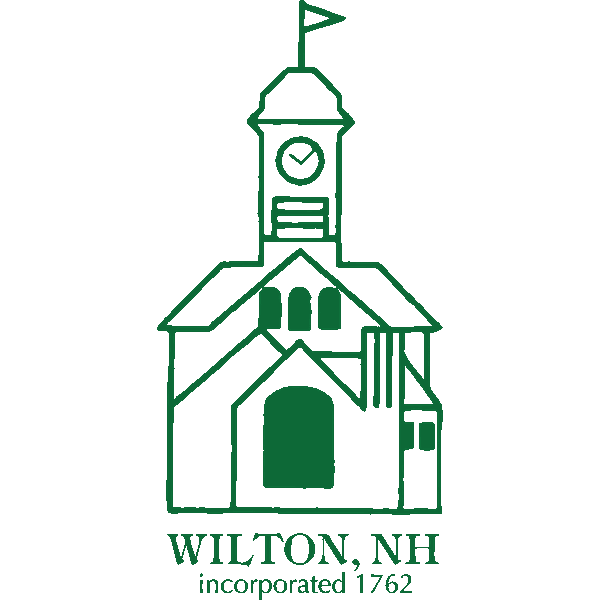This online version of the Zoning Ordinance has not been comprehensively checked against the official version. Neither the Town of Wilton nor the Zoning Board can be responsible for the consequences of any action taken on the basis of any errors in the online text.
This PDF file is the official printable text of the Wilton Zoning Ordinance as prepared for the Town of Wilton. by the Nashua Regional Planning Commission It is also available on the Planning Board page at the official Town of Wilton web site under the “Current Land Use Laws and Regulations” link.
This is the 2002 version of the Zoning Ordinance, including all amendments up to and including those passed by Town Meeting in March, 2002, but not any amendments passed in 2003 or later.
11.0 Wetlands Conservation District
11.1 Purpose.
11.2 District Boundaries.
11.3 Permitted Uses.
11.4 Special Exceptions.
11.5 Incorrectly Designated Zones.
11.1 Purpose.
In the interest of public health, convenience, safety and welfare, the regulations of this District are intended to guide the use of areas of land with extended periods of high water tables.
- To prevent the development of structures and land uses on naturally occurring wetlands which would contribute to pollution of surface and groundwater by sewage.
- To prevent the destruction of natural wetlands which provide flood protection.
- To prevent unnecessary or excessive expenses to the Town to provide and maintain essential services and utilities which arise because of inharmonious use of wetlands.
- To encourage those uses that can be appropriately and safely located in wetland areas.
11.2 District Boundaries. (Amended March 2002.)
The Wetlands Conservation District is hereby determined to be those areas delineated based on hydrophytic vegetation, hydric soils and wetland hydrology in accordance with the techniques and standards outlined in the Corps of Engineers “Wetlands Delineation Manual,” 1987, and the New Hampshire Department of Environmental Services Wetlands Bureau “Wetlands Rules,” March 12, 2001
The Wetland Conservation District is hereby determined to be those areas delineated as poorly drained or very poorly drained soils identified by the U.S. Department of Agriculture, Soil Con-servation Service, through field mapping surveys completed in 1985 and shown on its field mapping photographic sheets for the Town of Wilton, N.H. The Wetland Conservation District as herein defined is shown on a map or maps designated as the Town of Wilton Wetland Conservation District Map and shall be a supplement to the "Zoning Map" of the Town of Wilton, N.H.
In all cases where the Wetland Conservation District is superimposed over another zoning district in the Town of Wilton, the more restrictive regulations shall apply.
11.3 Permitted Uses.
Any use that does not result in the erection of any structure or alter the surface configuration by the addition of fill or by dredging and that is otherwise permitted by the zoning ordinance.
- Forestry - tree farming;
- agriculture;
- wildlife refuge;
- parks and such recreational uses as are consistent with the purpose and intentions of this section;
- conservation areas and nature trails;
- open spaces as permitted by subdivision regulations and other sections of this ordinance;
- natural drainage-ways, i.e. streams, creeks or other paths of normal run-off water; and
- water impoundments and wells for water supply.
11.4 Special Exceptions.
Special exceptions may be granted by the Zoning Board of Adjustment (ZBA) for the following uses within the Wetland Conservation District (see also Section 4.4):
- Streets, roads and other access ways and utility right-of-way easements including power lines and pipe lines if essential to the productive use of land not so zoned and if so located and constructed as to minimize any detrimental impact of such uses upon the wetlands.
- The undertaking of a use not otherwise permitted in the Wetland Conservation District, which may include the erection of a structure, dredging, filling, draining or otherwise altering the surface configuration of the land, if it can be shown that the proposed use will not conflict with the purpose and intent of this section and if the proposed use is otherwise permitted by the zoning ordinance. Proper evidence to this effect shall be submitted in writing to the Zoning Board of Appeals and shall be accompanied by the findings of a review by a soil scientist certified by the New Hampshire Board of Natural Scientists selected by the Planning Board and/or the Zoning Board of Adjustment. (Amended March 1999.)
- (Repealed March 2002)
- (Repealed March 2002)
- Any exception granted by the ZBA must be preceded by a public hearing thirty (30) days before approval may be given. Abutters to affected property must be notified then (10) days in advance of the public hearing.
11.5 Incorrectly Designated Zones. (Adopted March 2002.)
When the actual boundary of the Wetland Conservation District is in dispute by any owner or abutter actually affected by the boundary, the Planning Board, at the owner/abutters expense and request, may engage a certified soil scientist or a certified wetlands scientist to determine more accurately the precise boundary of the Wetland Conservation District, who shall submit to the Planning Board his findings.
The Planning Board, based upon the findings presented by the applicant, may adjust the boundary or area designation of the Wetlands Conservation District to reduce or expand the designated area to more correctly define the location and extent of the wetlands on a site-specific, case-by-case basis.
The Planning Board shall reserve the right to withhold action on the plat pending the results of an on-site and/or other investigation by the Board or its appointed agent and shall act to approve or disapprove the final plat within 90 days of submission or such further time as deemed necessary and provided for by New Hampshire State statute.
